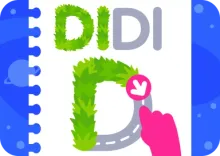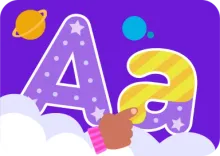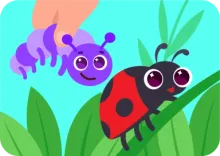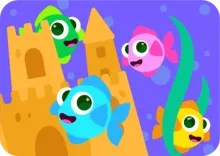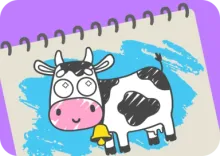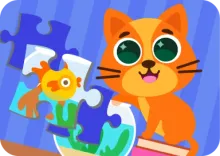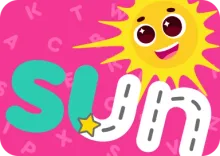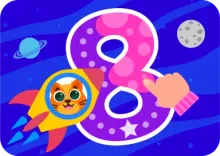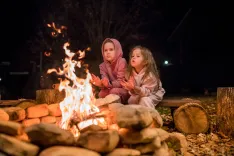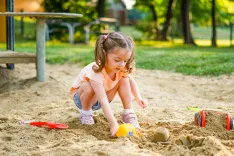Hand Games for Kids – Developing Dexterity, Coordination, and Connection Through Play
Hand games are quick, social, and easy to start anywhere. These playful routines support rhythm, coordination, memory, and turn-taking, making them perfect for classrooms, travel, or family time.

Hand games for kids to build coordination and focus
In a world where screens often replace real interaction and toys become increasingly complex, hand games for kids are a true treasure. Clapping games, gesture games, and fingerplay – these simple yet incredibly effective activities require no equipment and can be played anywhere as a simple hand game using just their hands in a simple way: at home, on the road, in line, or outdoors. They don’t just entertain – they help children develop essential skills, strengthen bonds between players, and bring lots of positive emotions, making the idea of hand games a creative approach to play and connection.
Why Are Hand Games So Important for Child Development?
Every finger movement, every clap, every gesture – is a small step toward significant growth. These games offer holistic benefits across many areas:
- Fine motor skills and dexterity. Regular finger movements, precise coordination, and alternating tension and relaxation all directly contribute to developing fine motor skills for kids. Finger games are especially effective for developing these skills, as they require precise finger control and movement. These are crucial for future handwriting, buttoning clothes, handling small objects, and many everyday tasks.
- Hand-eye coordination (eye hand coordination). Synchronizing what the eyes see with what the hands do is a fundamental skill. In hand games, children constantly practice this connection by watching their partner’s and their own movements.
- Cognitive development. Many games involve remembering sequences of movements and words (rhymes, songs). This actively trains memory, focus, and the ability to concentrate.
- Speech and vocabulary. Adding rhymes, songs, and chants to the games boosts speaking skills. Children learn rhyme and rhythm, expand their vocabulary by repeating and memorizing words.
- Social-emotional learning. Playing together teaches kids cooperation, taking turns, reading nonverbal cues, managing frustration (when something doesn’t work out), and celebrating shared success.
Hand games are a unique form of nonverbal communication and bonding. Synchronized movements, shared laughter, and physical contact (parent-child, child-child) create a deep emotional connection and a sense of belonging.

Help your child
grow with Keiki
We’ll help you turn everyday screen time into real learning progress.
Try KeikiScreen-Free Hand Games: Classics and New Ideas for Every Age
The beauty of hand games is that they require nothing but the desire to play, offering a variety of fun hand games and games to play for all ages, and are suitable even for the youngest children.
Here’s a collection of fresh ideas perfect for screen-free fun without distractions, including different versions of hand games that can be adapted for various ages.
For the Youngest (Ages 0–2) – Hand Games for Babies and Toddlers
At this age, games focus on sensory development, making them perfect for little ones, as well as imitation and strengthening the parent-child bond. We’ve gathered a few simple ideas, with each activity being a simple game suitable for this age group, to help you support your baby’s growth.
Pat-a-Cake
A timeless classic loved around the world, Pat-a-Cake is a clapping game featuring various clapping patterns. Clap hands to a simple rhyme. You can vary the tempo, the strength of the claps, or add gentle touches to the baby’s hands. This is one of the very first things to try if you’re interested in early development.
This Little Piggy Variant
Gently wiggle the child’s fingers while reciting a nursery rhyme. Each finger can be a little “character.” You can focus on one finger at a time, making this a great example of finger games for young children. Finish with a tickle on the palm. This is both a sensory experience and a way for the child to become aware of their own body.
Finger Puppet Theater: Where Is Thumbkin?
Sing a song about each finger hiding behind your back and then “appearing.” You can also incorporate finger spelling or basic sign language into the game to enhance learning. This helps babies learn body parts and builds object permanence.
Open and Close
Gently open and close the baby’s fists (using one hand or both, or show with your own hands for them to imitate), repeating: “Open, close, open, close, clap your hands, now gently place them on your knees.” You can create your own nursery rhyme hand gestures using the fist shape. This teaches opposites and self-regulation.
Raindrop Game
Run your fingers gently across the child’s palm on another person's hand to mimic raindrops. Start with light tapping, then a bit stronger, ending with a “big puddle” (a soft clap). This calms the child and develops tactile awareness.
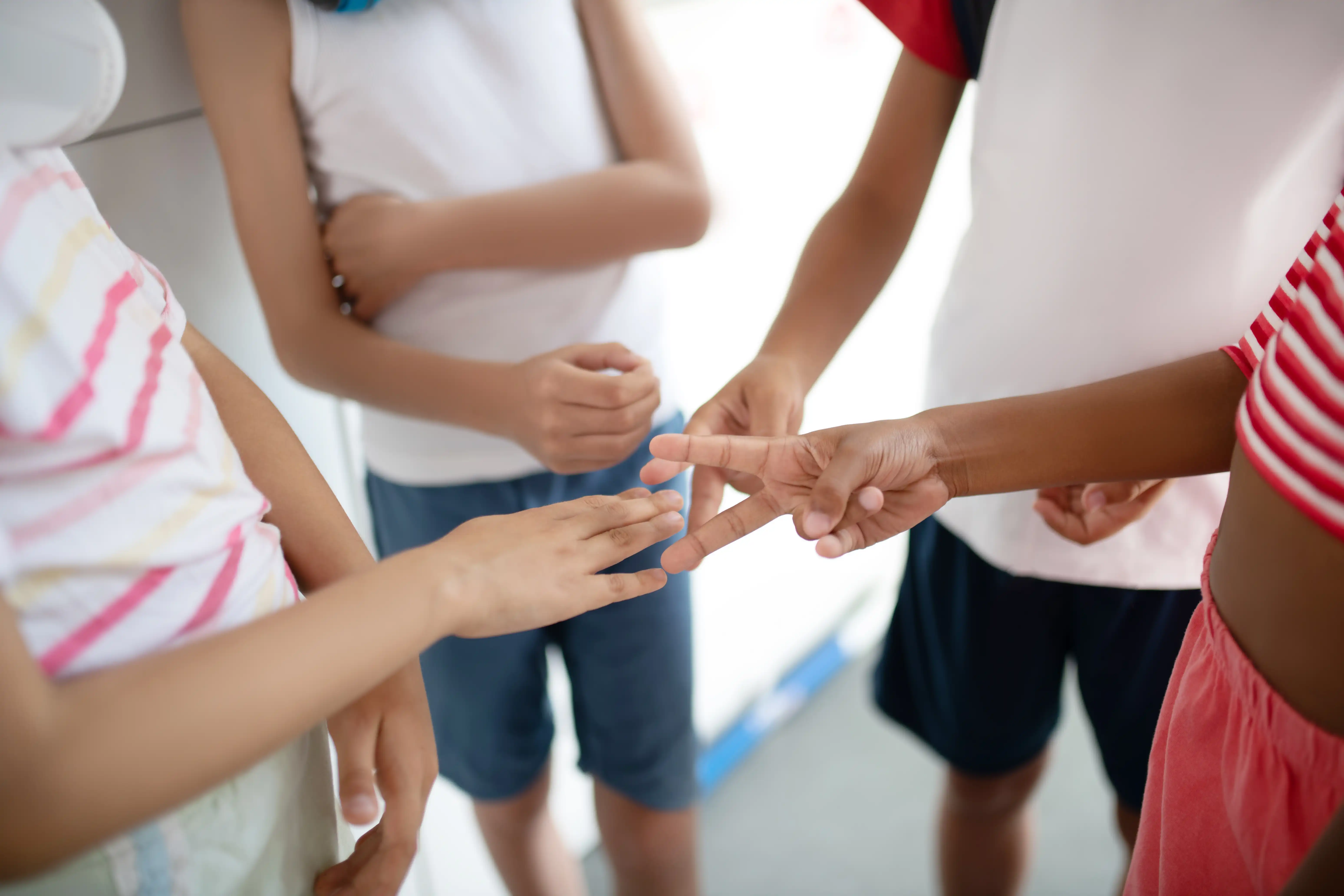
For Preschoolers (Ages 3–5): Preschool Hand Games for Fun and Learning
Children at this age are ready to remember sequences and interact with a partner; these games are great for two or more players and encourage interaction with the other player. Here are sensory hand games for kids up to 5 years old.
Rock, Paper, Scissors
A universal game for decision-making and resolving disputes. One player chooses a gesture, and the other player responds with their own choice. Teaches fair play, quick thinking, and turn-taking.
Miss Mary Mack and Other Clapping Games
Games where two players clap hands in a set sequence, known as hand clapping games, often have many versions to explore, each accompanied by a rhyme. There are many variations of rhythm and movement games for kids.
Thumb Wrestling
Two players lock hands, leaving thumbs free – this is also called a thumb war. The goal is to pin the opponent’s thumb using your own, making it a challenge to control the opponent's thumb. A simple competition that develops agility and strategic thinking.
Five Little Monkeys / Ten Little Fingers
Finger play songs for kids with corresponding hand motions that help practice counting, addition, and subtraction. Some songs focus on recognizing an even number of fingers or holding up two fingers at a time. There are hundreds of these catchy songs available online.
Copy the Clap
The leader claps a specific rhythm on the player’s hands, and the player must repeat it exactly. In some versions, this involves 'slapping' or a gentle 'slap' of the hands instead of a clap. This teaches active listening and rhythmic imitation.
Blind Artist
One child closes their eyes while the other “draws” a simple object (like a circle, house, tree) with their index finger on the palm. The blindfolded child must guess what was “drawn.”
Help your child thrive with playful learning
Turn screen time into real growth with Keiki’s educational games.
Try KeikiFor Early School-Age Children (6+ Years): Hand Games for Older Kids
These games require more advanced coordination, quick reactions, and may include strategic elements, making them classic games and perfect games for older kids. Perfect for children preparing for school or already in early grades.
Complex Hand Clap Games
Popular games like “A Sailor Went to Sea,” “Double Dutch Bus,” or regional variations are hand clapping games featuring intricate clapping patterns. These require memorizing long sequences, syncing with a partner, and maintaining rhythm.
Cat’s Cradle
A game using a loop of string where two players take turns creating different shapes. Players pull the string in different directions to form new patterns. It develops spatial thinking, fine motor skills, and step-by-step reasoning.
Finger Stick Game
A finger game where players use their fingers as “sticks” to tap the opponent’s fingers, increasing the number of “lives” (fingers). This finger game can involve using one finger or two fingers for different moves.
Advanced Gesture Rhymes
Adapted rhymes where each word is paired with a gesture or clap, such as “Patsy O’Patsy O’Riley.” Each hand game can have its own version, featuring unique gestures or clapping patterns. These enhance speech development and rhythmic coordination.
Related Games in Keiki App
Hand Games and Keiki – How Technology Enhances Tradition
Keiki doesn’t replace live interaction, but it can be a great complement, enriching the play experience and adding an educational element. After all, baby hand activities aren’t just about specific rules and gestures – they’re a whole set of tools to help develop fine motor skills, reaction speed, and attention. Here are some examples:
- Rhythm and music. Nearly all content in Keiki is interactive. It includes animated characters, music, and simple but rhythmic melodies.
- Tracing games. Keiki features specific tracing games where kids outline letters, numbers, and shapes – preparing their hands for more complex and precise movements used in hand games.
- Memory and sequence games. The app includes many games that train memory and the ability to repeat sequences (visual or auditory). There are especially many item-finding tasks (where kids tap with their fingers) and sorting activities.
- Vocabulary development. The app helps children learn words related to body parts, movements, and actions – useful for enriching rhymes and songs.
It’s important that the platform also offers offline access. Additionally, it includes printable worksheets where children can write and draw – training their fingers and hands in the process. The app provides all the information parents and educators need to support children's learning and play.
Hand games are also perfect for passing time in places like a doctor's office.
Benefits of Hand Games: More Than Meets the Eye
Let’s take a deeper look at the learning potential of these developmental hand games for kids:
- Language and literacy. Repeating rhymes and songs develops phonemic awareness, sense of rhythm and rhyme, and builds vocabulary.
- Math skills. Hand games often involve counting, sequences, and subtraction or pattern creation – reinforcing basic math concepts.
- Memory and sequencing. Memorizing complex sequences of movements and words is a powerful workout for working memory and pattern recall.
- Problem-solving. When rhythm breaks or mistakes happen, players must adapt, find a way to return to sync, or “untangle” the sequence together.
- Emotional regulation and stress relief. Rhythmic, repetitive movements have a calming effect.
- Social-emotional learning. Playing hand games teaches children to take turns, cooperate, and communicate. Learning to win or be the last player in a game helps children develop resilience and good sportsmanship.
How to Organize Hand Games: Tips for Parents and Educators
To understand how to teach hand games to toddlers, don’t forget these useful organizational tips:
- Create a relaxed atmosphere. Comfort and fun are more important than perfection. Don’t demand flawless performance – encourage participation and enjoyment of the process. Some games require players to stand in a circle, which can help everyone see and interact with each other.
- Start simple and build gradually. For toddlers, simple claps are enough. Once they master the basics, add new movements and longer rhymes. Keep age in mind – for example, clapping games for 2 players are great for toddlers but might be too simple for older children.
- Use repetition. Kids love repeating. Repetition helps them remember rhymes, motions, and strengthens neural connections.
- Be the example. Show how to play and enjoy it yourself. Your enthusiasm is contagious!
- Encourage creativity. Let kids invent new movements, come up with original rhymes, or change the ending of a well-known game.
- Mix with other activities. Hand games work perfectly as a break between more active games or a way to pass time while waiting. In some games, whoever's hand is on top or bottom of the stack takes the next turn, adding excitement and anticipation.
If a child struggles with these activities, you can draw instructions and visual cues. Children often remember better when they can see examples.

